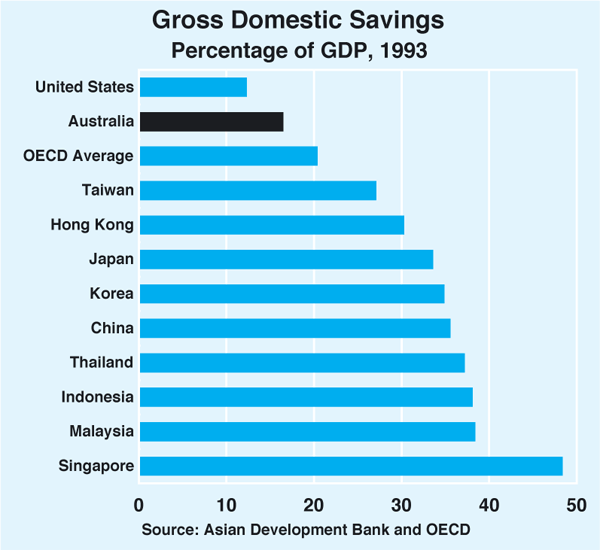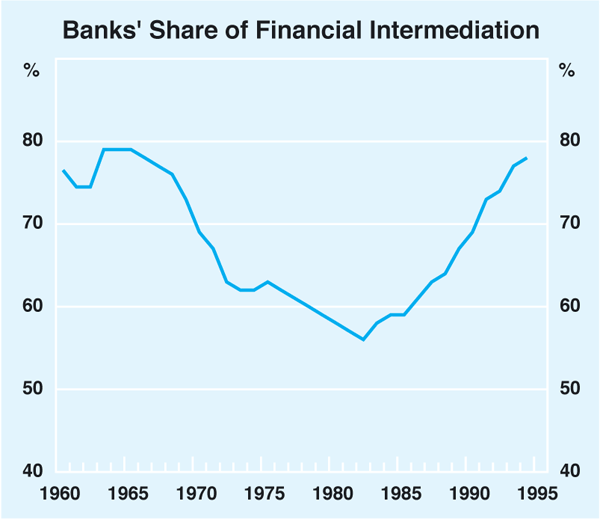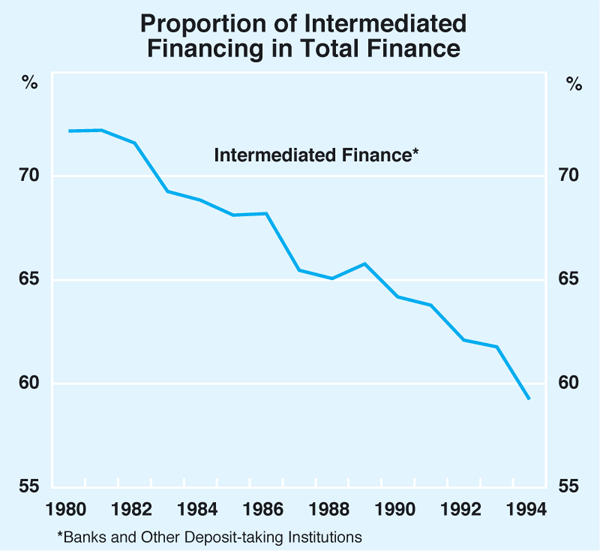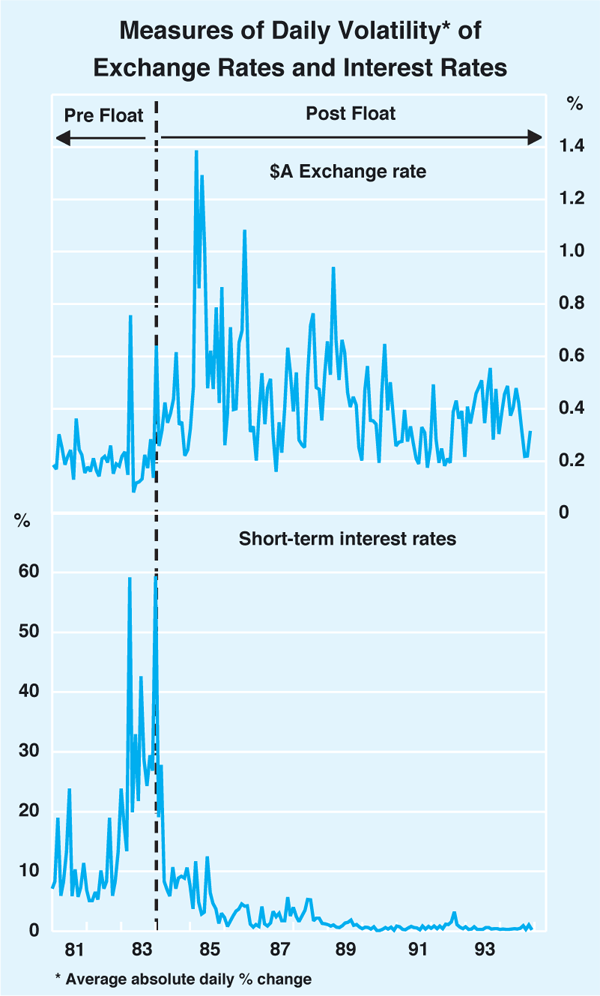Speech The Role and Development of Local Capital Markets

Bernie Fraser
Governor
Talk to Goldman, Sachs & Co. Conference
Singapore –
Introduction
It is a pleasure to take part in today's Conference.
My brief is to tell you a little about our experience with the development of financial markets in Australia, and to draw out aspects of that experience which might be of interest to other countries in the region.
After more than a decade of restructuring, Australia's financial system today is about as deregulated as any system is likely to become. Generally speaking, we are satisfied with the system that has evolved, although the process was not always as smooth as we might have expected or wished.
We can all learn something from each other's experiences, but there are no universal models which all countries should follow. Each country has its unique economic structure, stage of development and culture, and these will influence the depth and speed of financial reform. In any event, it would be unwise of me to push the Australian model in this audience, given the obvious success of countries represented here in funding sustained, robust economic growth; along with most OECD countries, Australia looks enviously at the high levels of savings and investment which characterise economies in this region (see Graph 1).

The Role of the Financial System
Financial markets perform various functions which, conducted efficiently, help to boost economic growth and living standards. Their raison d'etre is to bring together borrowers and lenders in ways that best allocate a nation's financial resources. To do this, they must provide savers with adequate real returns, while satisfying their liquidity and risk preferences; they must also allocate funds to a wide spectrum of borrowers at prices which accurately reflect the riskiness of projects.
To these ends, the financial system comprises different types of institutions and markets, each fulfilling specialised roles which reflect its particular comparative advantage. Banks and similar institutions tend to intermediate the bulk of lending to small and medium sized borrowers whose credit worthiness requires a good deal of information to assess. They are the conduits through which the funds of many small savers are transferred to borrowers who cannot raise money directly. That is their comparative advantage, and I expect banks to continue to perform this role for a long time to come.
Capital markets, on the other hand, allow borrowers (both public and private), whose credit worthiness is more easily assessable, to obtain funds directly, without the involvement of an intermediary. At their most basic, capital markets consist mainly of markets for debt and equity but, as sophistication grows, they expand to provide deep and liquid secondary markets, and to encompass other financial products, such as derivatives.
When I talk about the financial system, I will generally have in mind both banks and capital markets.
The Evolution of Financial Markets in Australia
Since the late 1970s, Australia has moved from having a narrow, tightly regulated financial system to an open, market-based system. The transformation occurred in several stages; there was no ‘Big Bang’, but the pace of change did accelerate in the first half of the 1980s.
Various catalysts were involved. In some respects, the main driving force was simply that the regulated system was breaking down under the weight of its own restrictions and distortions. Another contributing factor was a shift in the intellectual climate, away from the view that the financial system was an instrument of government policy toward a more libertarian view that economic objectives would be better served by allowing market forces greater sway. This shift was promoted by the Campbell Committee, which conducted a major review of the Australian financial system in the early 1980s.
In the early post-war period, the Australian financial system was highly regulated and dominated by banks engaged in traditional intermediation. Interest rates on bank deposits and loans were set by the authorities. The operations of banks were also subject to lending guidelines. Interest rates on government debt, too, were set by the authorities, and there were ‘captive market’ arrangements under which banks and other institutions were required to hold minimum amounts of government debt. The exchange rate was fixed for much of this period; from the mid 1970s, it was set daily by the authorities. An extensive range of exchange controls was in place.
These arrangements worked well enough during the fairly tranquil 1950s and 1960s. By the mid 1970s, however, the regulations on the banks were causing them to lose market share to other, unregulated institutions, such as merchant banks and building societies (see Graph 2). As the banks' share of intermediation contracted – from about 80 per cent to about 55 per cent – the rationale of the regulations was undermined. For one thing, monetary policy became increasingly difficult when the controls under-pinning it applied to a shrinking part of the financial system.

To counter these problems and assist banks to compete with non banks, interest rates on some bank deposits were deregulated in the mid 1970s. This process continued gradually over the following 10 years until all controls on bank interest rates and lending had been removed. As banks gained the freedom to set their own interest rates, their share of intermediation business recovered steadily (see Graph 2).
Once bank interest rates were free to move, it became increasingly untenable to maintain managed rates on government debt. Interest rates on government debt were, therefore, deregulated in the late 1970s and early 1980s, as the authorities moved to a tender system for issuing government securities. This allowed the Government to fully fund its requirements in the market place, without recourse to central bank financing (and all the adverse consequences for monetary growth associated with that kind of financing). As such, it helped to make the central bank and monetary policy more independent.
As a result of these changes, interest rates were free to move but the exchange rate was not. One consequence was that pressures in the economy were reflected in a lot of volatility in interest rates but not much in the exchange rate. Perhaps more importantly, the huge flows of capital into and out of the country made it very difficult to control financial conditions.
The next logical steps in the process, therefore, were to float the exchange rate, and to dismantle exchange controls. These changes occurred in December 1983. The floating rate regime, I believe, has served the Australian economy well over the past decade. As well as bringing a powerful discipline to bear on domestic policy making, it has helped in managing the big swings in the terms of trade to which Australia is subject.
By the end of 1983, then, most interest rates and the exchange rate were free of restrictions and effectively determined in the market place. Although the main changes were concentrated in a relatively short period, it would be incorrect to infer that the whole process unfolded in accordance with a planned script. There were elements of that but responses to particular ‘shocks’ also played a part (as, for example, with the float). It might not be ideal but sometimes opportunities to implement reforms will arise unexpectedly, and it is a matter of being prepared to seize those opportunities at the time.
One area where the authorities deliberately proceeded gradually was in relation to the entry of foreign banks. To promote increased competition in the banking sector, 16 major foreign banks were invited in the mid 1980s to establish operations in Australia. At that time they were required to establish as subsidiaries, and to offer a wide range of banking services. Their entry certainly contributed to a more competitive banking system in Australia – way beyond what their 10 per cent share of the market might suggest. That competition, however, was to lead to many unwise lending decisions and some very large losses for domestic and foreign banks alike.
Two years ago, the policy on foreign banks was liberalised to the point where any foreign bank which can satisfy Reserve Bank requirements can expect to get a banking authority. If they wish, new entrants (and the foreign banks established earlier as subsidiaries) can choose to operate as a branch. Since this policy change, 11 authorities have been granted to foreign banks to operate as branches, including three to former subsidiaries; two authorities have been granted to foreign banks to operate as subsidiaries.
The banks today count for nearly 80 per cent of financial intermediation, which is similar to the levels of 30 years ago. Over time, however, the intermediation process has become less important as a source of financing in the economy overall, with corporates switching more to direct financing and households channelling more of their savings into pension and other managed funds, rather than bank deposits. Intermediated finance (through banks and other deposit taking institutions) has declined from about 72 per cent of total finance in 1980 to about 59 per cent in 1994 (see Graph 3), with a corresponding increase in direct funding in capital markets.

In recent years, equity funding has satisfied nearly three-quarters of the corporate sector's external financing needs, and debt the remaining quarter. This is in marked contrast to the 1980s when the corporate sector substantially increased its gearing, mostly through the banking system, either directly as loans or indirectly through short-term bank bills.
There has been little development of a longer-term corporate debt market in Australia. Various reasons have been suggested for this, including the persistence, until recently, of relatively high rates of inflation in Australia, which reduced the incentive to issue and hold longer-term securities. Perhaps of most importance, however, has been the ability of many of Australia's largest firms to raise funds at competitive rates in Euro and other overseas markets, helped by the development of active markets in cross currency and interest rate swaps. In other words, it makes sense for many countries to tap into existing international markets, rather than trying to develop all elements of capital markets within their own borders – particularly given the high costs in terms of skilled manpower and other resources involved in establishing some capital markets.
Over the past decade, partly as a by-product of deregulation, and partly as a result of ongoing financial innovation and global integration, financial markets in Australia have expanded rapidly in size and sophistication. Some figures on average daily turnovers are shown in Table 1.
| Year ended June | Commonwealth Bonds | State Government Bonds | Bank Bills | Equities | Foreign Exchange |
|||
|---|---|---|---|---|---|---|---|---|
| Physical | Futures | Physical | Futures | Physical | Futures | |||
| 1985 | 0.3 | – | n.a. | 0.3 | 0.5 | 0.1 | 0.1 | 9.2 |
| 1990 | 1.2 | 1.7 | 2.0 | 1.7 | 11.4 | 0.2 | 0.2 | 38.5 |
| 1994 | 4.1 | 5.9 | 3.0 | 1.0 | 15.8 | 0.5 | 0.6 | 51.8 |
Not all of this growth in turnover could be described as totally beneficial. At times, speculation has led to some over-trading, which has caused problems, including for policy makers. Overall, however, the growth in turnover mainly reflects the greater ability of markets to channel funds into productive areas, and to transfer risk to those most willing to bear it.
Complaints that deregulated markets lead to excessive volatility in financial prices are heard most often in Australia in relation to the exchange rate. It is true that the exchange rate was more volatile for a number of years immediately after the currency was floated. In more recent years, however, it has exhibited rather less volatility. The flipside to the increase in volatility in the exchange rate is the decrease in volatility in interest rates (see Graph 4). To the extent that asset prices have become more volatile, the greater availability of hedging instruments now on offer – a direct consequence of deregulation – assists companies and individuals to handle the associated risks more effectively.

Overall, the financial services available to the Australian community are now more varied, and delivered more efficiently, than was the case before deregulation. We are now through the transitional period and we have no wish to return to the regulated system; deregulation has delivered benefits to customers, provided opportunities for new entrants, and compelled existing players to lift their game.
Lessons of the Australian Experience
As I noted at the outset, we should be wary about seeking to transfer particular approaches and experiences from one country to other countries. There is no single approach which is suitable for every country. Different models exist – and work – and it is for each country to select the approach which best suits its unique circumstances and stage of development. A floating exchange rate regime, for example, suits Australia's economic structure and has been a plus in terms of macro-economic management, but it will not necessarily suit other countries.
This general point is well underlined by the observation that, with the exception of Singapore and Hong Kong, many countries in the region have achieved their impressive economic performances without the benefit of competitive and well developed financial markets. Their high levels of saving and investment are testimony to the existence of efficient arrangements, but these tend to be more informal or government directed than markets in major industrial countries. As these countries develop and industrialise, they will discover that, like Australia, they have no option but to free up their financial markets. Indeed, properly conducted, that process itself can help to sustain high levels of economic activity.
Based on Australia's experience, I would draw five general lessons:
- Market-based approaches are to be preferred over regulatory regimes. This is not because markets are perfect – they are not – but because they tend to work better than the alternatives in collecting and allocating national savings in developed economies. At the same time, unfettered markets – be they markets for loans, equities, bonds or foreign exchange – can and do move a long way from what might be considered equilibrium levels on occasions – for example, when market psychology takes over from economic fundamentals. The authorities need to be alert to this possibility, and be prepared to intervene when particular markets are in danger of seriously under- or over-shooting. At times, we have intervened very heavily in the foreign exchange market (by as much as $US1 billion on some days); by the same token, we have not intervened at all over the past year or more.
- A program of orderly reform is to be preferred to being propelled along in response to shocks. Even with the best laid plans, however, some departures will inevitably be required. Similarly, there are no hard and fast rules when it comes to the proper sequencing of domestic financial reforms and measures to liberalise capital flows: different approaches will suit different countries. In short, I think it is helpful to have a plan but it also pays to be pragmatic, and to be ready to seize any opportunity for reform that presents itself.
- Once started on the deregulation path, it is hard to get off. Deregulation, like pregnancy, is not something you can have just a little bit of. Its progress is inexorable, as one reform begets other reforms. We have seen in our own case how liberalisation of financial markets has led to pressures to liberalise product markets (through ongoing tariff reductions and other forms), to bring more competition in the provision of infrastructures (such as transport, communications and power generation), and to free up the labour market (through, for example, enterprise-based wage bargaining).
- Financial deregulation can unleash powerful and unpredictable forces. In Australia, the lifting of interest rates and credit controls, and increased competition from foreign banks, contributed to a surge in credit growth, and a substantial increase in risk taking in the financial sector, and in the community generally. As in some other countries, this over-borrowing went hand in hand with rising asset prices. Deregulation also has increased the economy's exposure to external shocks, such as the widespread rises in bond yields in 1994.
- The fifth and perhaps most enduring lesson of all is the need for reforms to be complemented by ongoing discipline in financial affairs and policy making – what Gerry Corrigan calls the pursuit of price and financial system stability. This discipline is always important but the need is heightened by financial deregulation. By and large, the necessary discipline has been forthcoming at the macro-economic policy level in Australia – aided in no small measure by the unrelenting scrutiny of domestic economic and political developments by the international financial community brought about by deregulation itself. Partly as a result of this scrutiny, the Australian economy today is much more productive and competitive than it was a decade ago and we have had more than three years of inflation of 2 per cent or less.
With the benefit of hindsight, however, it is apparent that especially rigorous discipline is required if the excesses that can flow from fierce competition among deregulated banks are to be avoided. In particular, if we were to have our time over again, we would have to try harder to ensure that the banks, their customers and their supervisors were better prepared for financial deregulation, especially in terms of their information and risk management systems. The safeguards which supervisors need to impose to reduce the chances of damaging financial collapses increase, rather than diminish, as deregulation increases but, at the end of the day, these safeguards are no substitute for the rigorous credit control mechanisms and mature lending policies which only prudent bank and other capital market managements can provide.